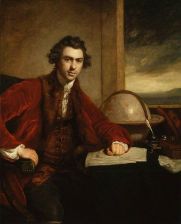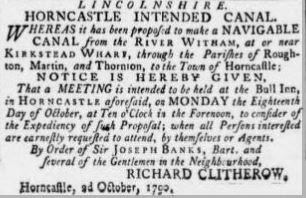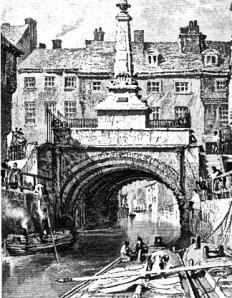
I came across this question on Google when I was researching something else. There were several answers, 1072, 1350, 1660, 1837, so I had to find out.
 Lincoln had been a port since the time of the Roman Empire, shipping grain and produce to other parts of Roman Britain via the Foss dyke canal (it is not known if the Roman's built the whole of the canal, but they may have built the canal from Torksey to Hardwick near Saxilby) and the River Witham.
Lincoln had been a port since the time of the Roman Empire, shipping grain and produce to other parts of Roman Britain via the Foss dyke canal (it is not known if the Roman's built the whole of the canal, but they may have built the canal from Torksey to Hardwick near Saxilby) and the River Witham.The population of Roman Lincoln is believed to be between 6,000 and 8,000.
Within a century of the Roman's departure Lincoln was virtually deserted, it wasn't until the Viking conquest in the late 9th century that Lincoln started to grow again. By the Norman Conquest Lincoln was a important Viking town. William I, built his castle here not just because of its superb defensive position but also to subdue the Viking population. Four years after the building of the castle the building of bishop Remigius' cathedral commenced, enhancing Lincoln's (known as Nicole by the Normans) status even further. Estimates based on the Domesday Book give a population in Lincoln at that time of about 6,000.
Lincoln grew rapidly in the 12th century, the main driver of this was cloth-making, the famous Lincoln Green used by Robin Hood, and Lincoln Scarlet, for those that could afford it. By 1150, Lincoln was one of the wealthiest towns in England. Lincoln cloth-makers travelled to fairs throughout England; Flanders, Castile and Portugal were important export markets. English Kings bought Lincoln Scarlet.
Lincoln became a Staple Town in 1291, exporting wool and cloth to mainland Europe. Many landowners changed at this time from arable farming to rearing sheep, the Lincolnshire Wolds had been one of the most densely populated areas of the country, the change in farming brought about a decline in the population of the wolds.
Over the years the River Witham became more and more impassable, so much so that in 1369 the Staple was moved to Boston, this on top of the Black Death of 20 years earlier, had a devastating effect on the prosperity of Lincoln.
 In an attempt to improve Lincoln's prosperity, Henry IV, by a charter of 1409, raised Lincoln to the status of a county, "The County of the City of Lincoln", this allowed the city to elect two sheriffs, and to receive the taxes previously paid to the county. Henry also granted a 31 day fair to be held 15 days before and 15 days after 17 November, St Hugh's Feast Day (a 31-day market! Can you imagine Lincoln Christmas Market lasting that long?).
In an attempt to improve Lincoln's prosperity, Henry IV, by a charter of 1409, raised Lincoln to the status of a county, "The County of the City of Lincoln", this allowed the city to elect two sheriffs, and to receive the taxes previously paid to the county. Henry also granted a 31 day fair to be held 15 days before and 15 days after 17 November, St Hugh's Feast Day (a 31-day market! Can you imagine Lincoln Christmas Market lasting that long?).
Even after this charter, Lincoln continued to deteriorate and depopulate and in 1461 Edward IV granted a charter that removed the villages Branston, Waddington, Bracebridge and Canwick from the county and added them to "The County of the City of Lincoln".
Lincoln had city status conferred on it by letters patent in 1540, along with 19 other cities, but Lincoln had been known as a city since "time immemorial", in fact since the year 1072. All the places qualified for city status due to them having a diocesan cathedral



